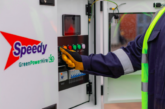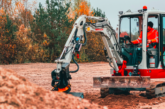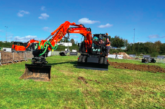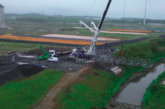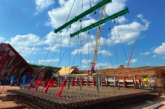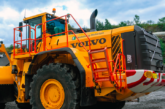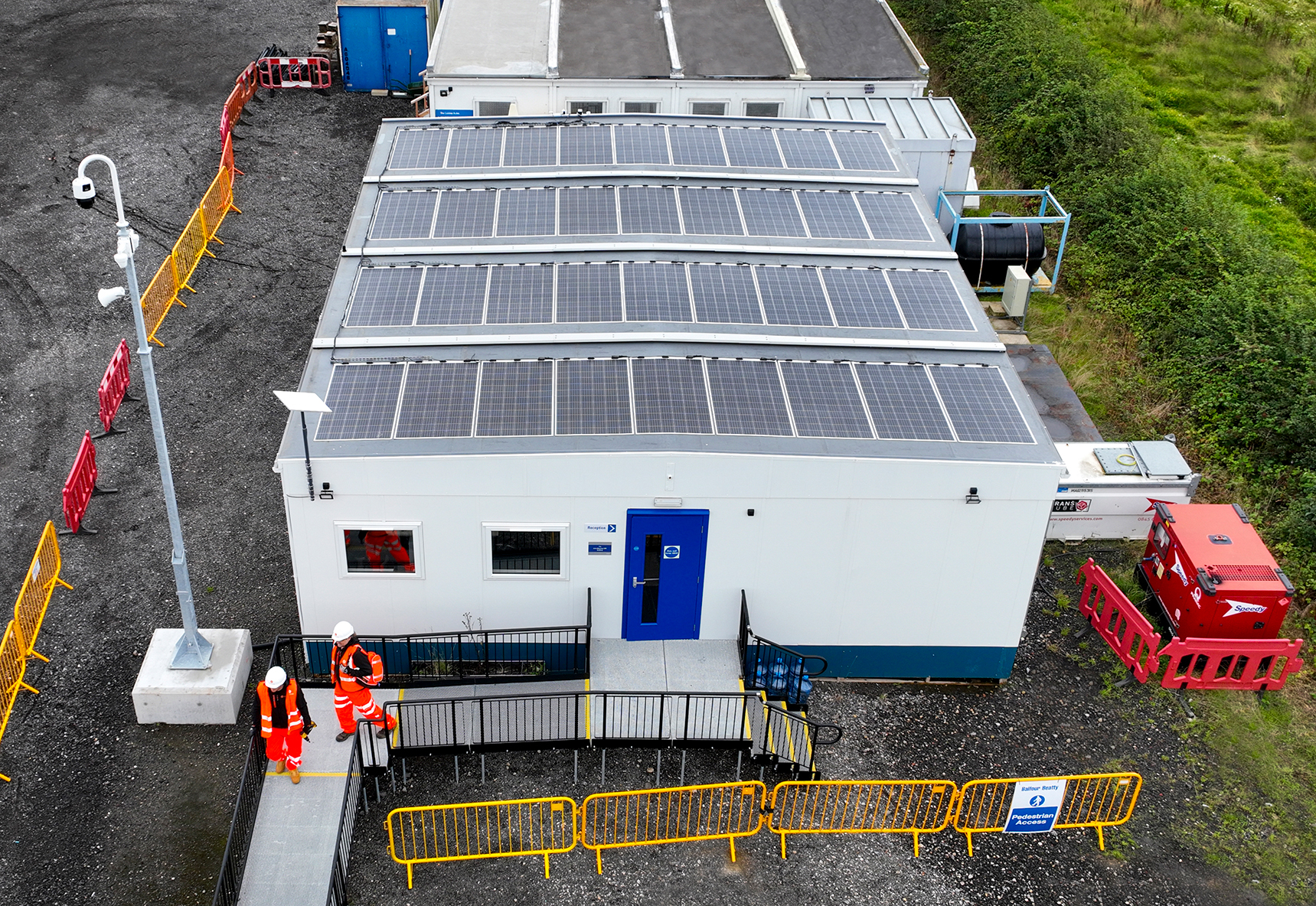
As up the scale and pace of sustainability efforts in line with net zero goals tamp up, it is critical that the vast opportunities afforded by on-site self-generation are not overlooked. Ciaran Cotter, technical director at Solivus, explores why the sustainable benefits of on-site generation go far beyond decarbonisation.
A report by the UK Green Building Council found that the construction industry has fallen short on many of its emission reduction targets over the last five years. This means the sector will need to decarbonise much faster to keep its 2050 net zero target in sight.
Take, for example, the use of heavy machinery. It’s estimated that around 300,000 items of Non-Road Mobile Machinery are used in UK construction. This type of equipment is typically powered by diesel generators consuming 2.5 million tonnes of oil equivalent (Mtoe), generating significant carbon emissions.
With this, it’s easy to see why regulations and industry bodies continue to seek to drive them out. This was seen in April 2022 when rebated red diesel became banned in construction. Then more recently, representatives from across the industry collaborated on the development of the Zero Diesel Sites Route Map which sets out to eliminate diesel from most construction sites by 2035.
To hit these goals, it’s clear that the sector must transition to environmentally friendly substitutes to maximise efficiencies and carbon reductions.
Solar offers the obvious alternative. Still, its use in construction plants has been limited thus far. Part of this can be attributed to logistical challenges, with standard aluminium framed solar panels typically too heavy to be used on the standard modular cabins found onsite. In response, some construction plants have sought to tackle this by structurally bolstering solar panels to the cabin form. But this can be timely and costly. It also brings further complexity in the inability to stack cabins on top of each other upon job completion for reuse.
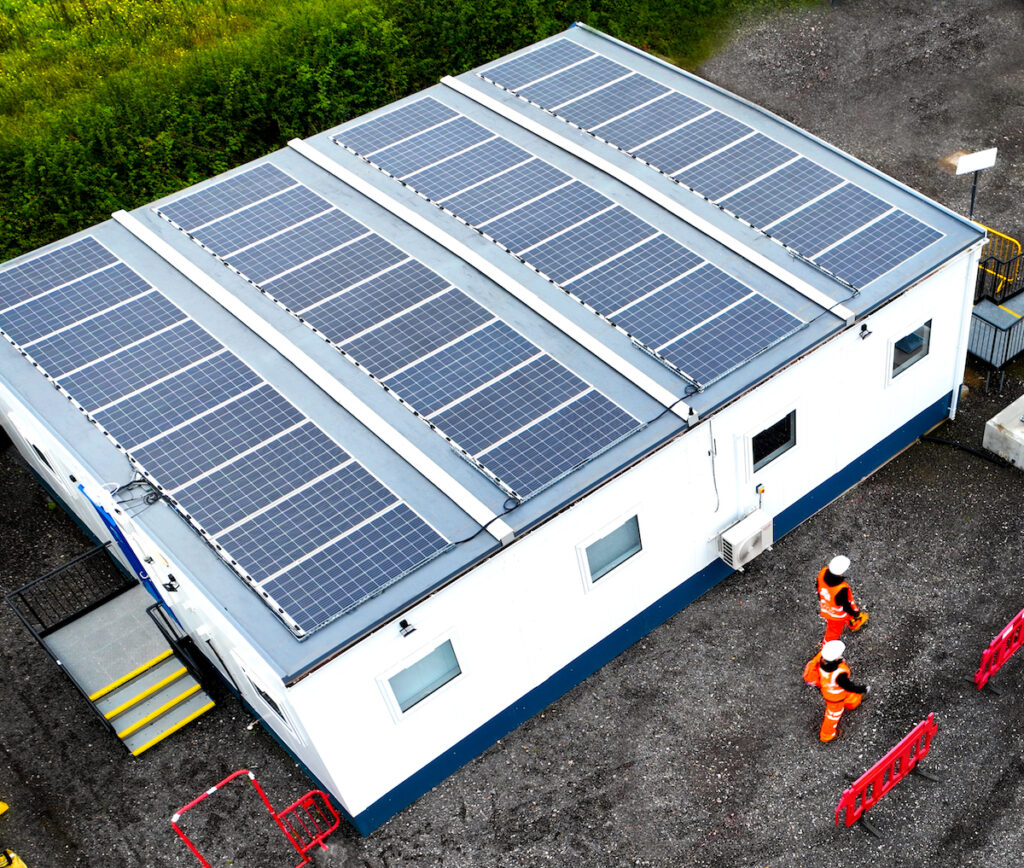 Innovation leap
Innovation leap
However, this is all changing with the arrival of a marked innovation leap in the commercial solar category. The result of extensive research and innovation, the latest generation of innovative lightweight solar panels are a fraction of the weight of conventional panels and have more universal applications for fixing methods which have opened up new roof space opportunities.
A great example of this opportunity can be found in Solivus’ recent work with one of the world’s biggest infrastructure names. Hereby, the challenge was to create a solar-fuelled alternative to the diesel generators currently used to power our client’s construction site cabins portfolio.
To achieve this, an innovative, low carbon set up which combines lightweight solar panels with a battery storage system and a backup diesel generator was created. An off-grid, decentralised, self-sufficient energy hub. The system works by storing the excess energy generated by the solar panels in a connected battery storage unit. As a result, site cabins can be powered continuously, with the system automatically releasing the reserve energy even when there is no sunlight.
The recent pilot project – a modular building with a roof space of approximately 100m2 – is estimated to have saved the client up to 14,416Kg of carbon dioxide emissions, 5223 litres of diesel with a gross annual saving of £9,140; while ensuring a reliable, resilient, clean energy supply. This is a solution they now plan to roll out to their own clients.
Underscoring this too is a dedicated operations and maintenance (O&M) programme designed to ensure the project continues to reach its full value potential. This is supported with a five-year workmanship warranty, a twelve-year product warranty and a twenty-five-year performance warranty.
Survival of the greenest
Of course, solar is a serious investment. However, the transition to a diesel-free construction plant is happening right now. By taking advantage of this new opportunity to introduce lightweight solar, construction plant operators can add commercial value throughout the lifecycle of a project, improve their green credentials and build resilience amid an emerging new era where it’s likely to be ‘survival of the greenest.

